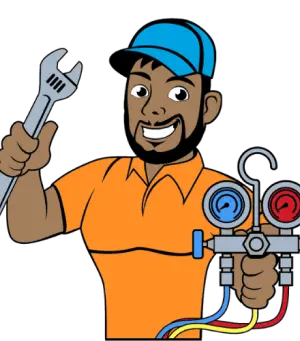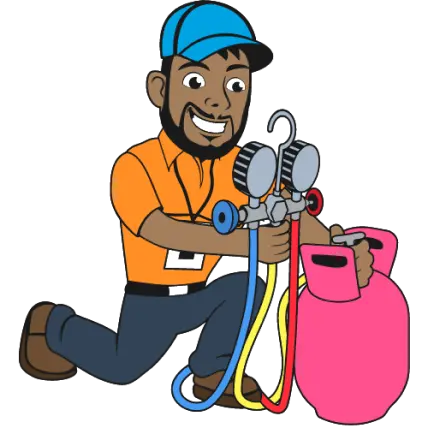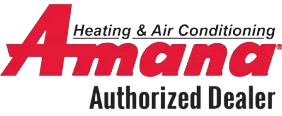In San Antonio, your air conditioner doesn’t get a break. With long, scorching summers and humidity that clings to everything, your AC system is your home’s frontline defense. But not all AC systems are built the same—or built for the same kinds of homes.
This guide breaks down the different types of central AC units homeowners might have or consider installing. From traditional split systems to ductless options, you’ll learn how each works, what repairs are common, and which ones handle Texas heat without breaking a sweat.
Why It Matters: Picking the Right AC System for San Antonio’s Climate
Choosing the wrong type of AC system can quietly sabotage your home’s comfort and your wallet. Maybe your unit runs constantly and still leaves hot spots in the house. Maybe it cycles too fast. Or maybe the humidity never seems to go down no matter how low the thermostat goes.
These are often symptoms of mismatched systems—not just old ones.
In San Antonio, an effective AC system needs to do more than cool. It should:
- Remove humidity from the air efficiently
- Be designed to handle long operating hours
- Resist outdoor wear and tear, especially in exposed installations
- Be easy to repair when the inevitable happens
Knowing your system type—and its strengths or weaknesses—can help you catch issues early, make smarter upgrades, and keep your home cool and your AC running strong for years.
Split-System Air Conditioners (Traditional Central AC)
This is what most homeowners picture when they think of central air conditioning.
A split-system AC has two main components:
- An outdoor unit with the compressor and condenser coil
- An indoor unit (usually in the attic or closet) with the air handler and evaporator coil
Air is cooled at the coil, pushed through your ductwork, and delivered to each room.
Pros:
- Efficient and reliable when properly maintained
- Quiet operation inside the home
- Allows for powerful dehumidification—ideal for San Antonio
Repair Watchlist:
- Frozen evaporator coils from airflow restrictions or dirty filters
- Refrigerant leaks in copper lines or coils
- Clogged condensate drains leading to water leaks
- Leaky ducts that reduce efficiency and strain the system
Comfort Tech specializes in diagnosing and repairing split systems, especially those suffering from humidity overload or inefficient cooling. If your attic ductwork is sweating or your system struggles on 100° days, we can help.
Packaged AC Units (All-in-One Systems)
Unlike split systems, a packaged AC unit keeps everything—compressor, coils, and air handler—inside a single outdoor cabinet. These are often installed on rooftops, crawlspaces, or concrete pads next to the home.
They’re commonly found in older homes, mobile homes, and homes where indoor space is limited.
Pros:
- Saves space inside the home
- Easier and quicker to install
- Less indoor noise since all components are outside
Repair Watchlist:
- Weather damage due to full outdoor exposure
- Rodent or pest intrusion (especially in crawlspace installs)
- Coil corrosion or rust from moisture accumulation
- Electrical issues due to storm exposure or poor sealing
Ductless Mini-Split Systems
A ductless mini-split system skips the ductwork and cools individual rooms or zones through small wall-mounted units connected to an outdoor compressor.
These systems are ideal for room additions, converted garages, older homes without ducts, or families who want to cool specific areas without conditioning the entire home.
Pros:
- Highly energy-efficient due to zoned cooling
- No duct losses, which is helpful in homes with older, leaky ductwork
- Quiet operation and sleek indoor units
- Easy to retrofit into any room
Repair Watchlist:
- Drainage issues in indoor units causing leaks
- Sensor or communication errors between indoor and outdoor units
- Refrigerant leaks, especially in long line sets
- Dirty filters or coils due to lack of maintenance
Hybrid (Dual-Fuel) HVAC Systems
A hybrid system, also known as a dual-fuel system, combines a traditional gas furnace with an electric heat pump. It automatically switches between electric and gas based on which is more efficient for the outside temperature.
While they’re more common in regions with cold winters, hybrid systems can still benefit San Antonio homeowners—especially those seeking year-round energy savings with backup heat for occasional cold snaps.
Pros:
- Smart energy usage: runs on electricity when efficient, gas when needed
- Delivers both heating and cooling in one system
- Can reduce monthly utility bills
Repair Watchlist:
- Switching issues between gas and electric modes
- Compressor or furnace ignition failures
- Control board malfunctions from increased complexity
- Heat pump refrigerant issues that affect both heating and cooling
Heat Pumps as Central AC Systems
A heat pump works similarly to a traditional AC system but with a twist: it can reverse its function to provide heating in the winter. This makes it a popular all-in-one solution in climates like San Antonio where winters are mild and rarely require full-force gas heating.
Pros:
- Provides both cooling and heating in one system
- Excellent energy efficiency
- Best suited for homes in regions without extreme winters
- Reduces reliance on natural gas or propane
Repair Watchlist:
- Reversing valve failure (causes the system to get stuck in one mode)
- Low refrigerant levels, impacting both heating and cooling
- Defrost control board errors
- Frozen outdoor coils during rare winter freezes
Which System Makes the Most Sense for San Antonio Homes?
Here’s the breakdown to help homeowners quickly assess the right system based on their needs:
| System Type | Best For | Repair Frequency | Energy Efficiency | Ductwork Required? |
| Split-System AC | Most standard homes | Moderate | High | Yes |
| Packaged Unit | Homes with space limitations | High | Moderate | Yes |
| Ductless Mini-Split | Zoned control or homes without ducts | Low | Very High | No |
| Hybrid/Dual-Fuel | Year-round energy efficiency | Moderate-High | High | Yes |
| Heat Pump | Mild climates like San Antonio | Moderate | High | Yes |
Thinking of switching?
Consider:
- The condition of your current ductwork
- How many rooms need cooling
- Your energy costs and repair history
- Whether you want heating from the same unit
Stay Cool, No Matter Your AC System
Not sure what system you have—or if it’s even working properly?
Comfort Tech can help. From quick repairs to full system inspections, our San Antonio-based techs know how to fix every type of central AC system under the sun (and trust us, Texas brings the heat).
✅ Licensed HVAC specialists
✅ Fast service in and around San Antonio
✅ Experience with split systems, mini-splits, heat pumps & more
Contact Comfort Tech
- Phone: (210) 920-4645
- Email: service@comforttechsac.com
- Website: www.comforttechsac.com
- Serving: San Antonio & nearby communities
FAQ: Central AC Questions Homeowners Ask Most
- What’s the most efficient central AC system for hot climates?
Ductless mini-split systems and modern split-system ACs with high SEER ratings tend to be the most efficient in hot, humid areas like San Antonio. Heat pumps also perform well here due to our mild winters.
- How long do central AC systems typically last?
Most central AC systems last between 12–18 years, depending on the type, brand, and how well they’re maintained. Regular tune-ups can extend lifespan and reduce costly repairs.
- Do all AC systems need maintenance?
Yes. Regardless of the type, every central AC system benefits from regular filter changes, annual coil cleanings, and drain line checks. Systems with more components (like hybrid systems) may require twice-yearly servicing.
- How do I know if my ducts are the problem?
Signs of duct issues include uneven cooling, rising energy bills, dust buildup, or musty odors. A Comfort Tech inspection can quickly identify duct leaks, poor insulation, or airflow problems.





